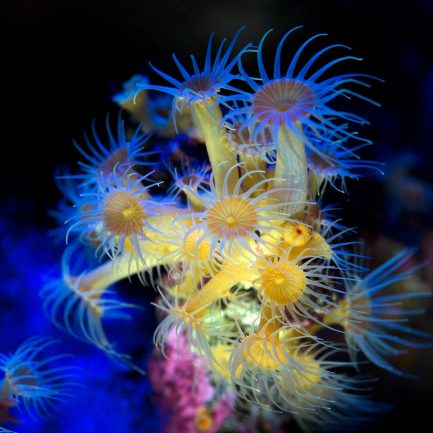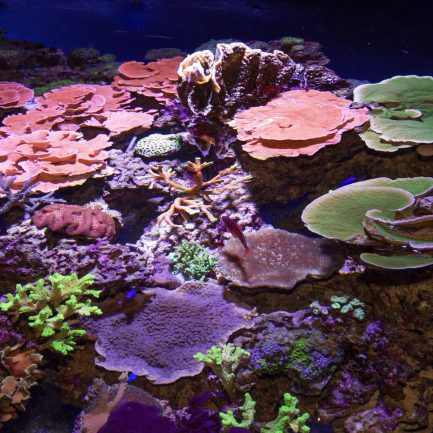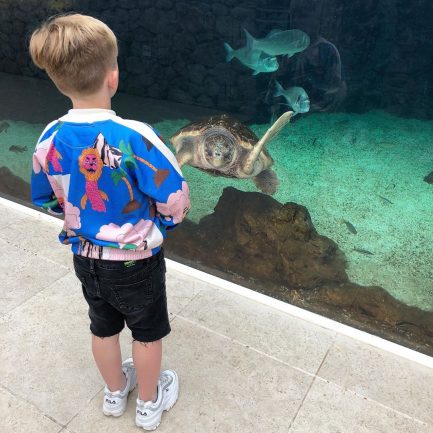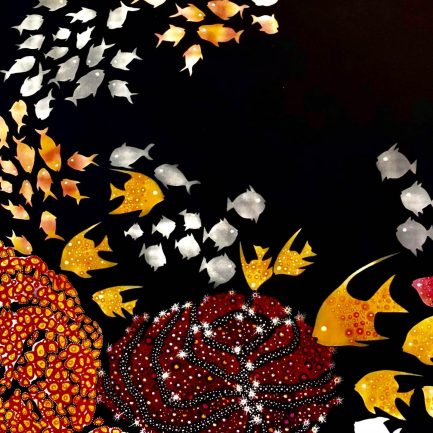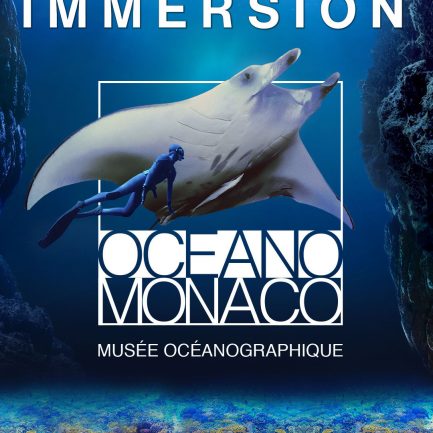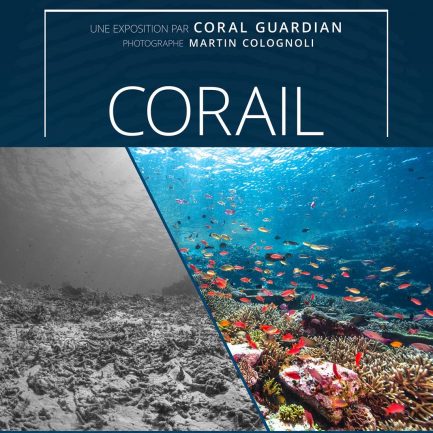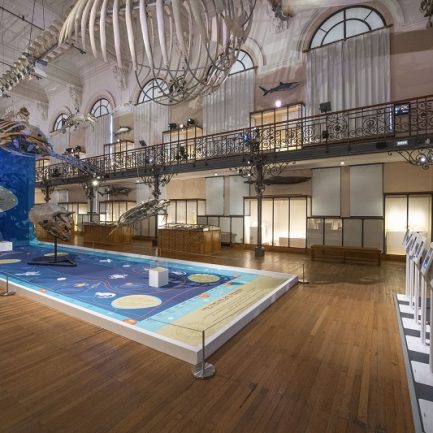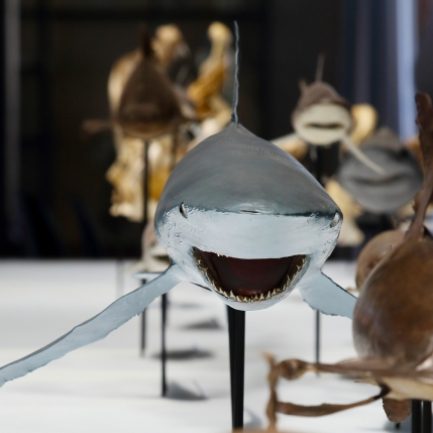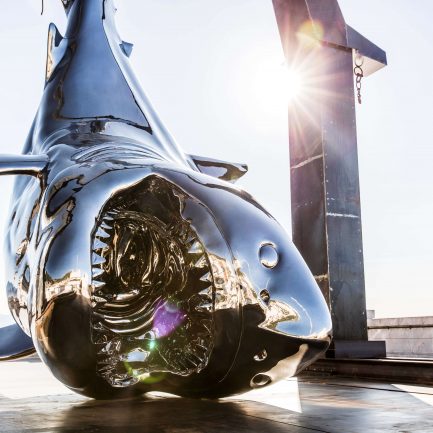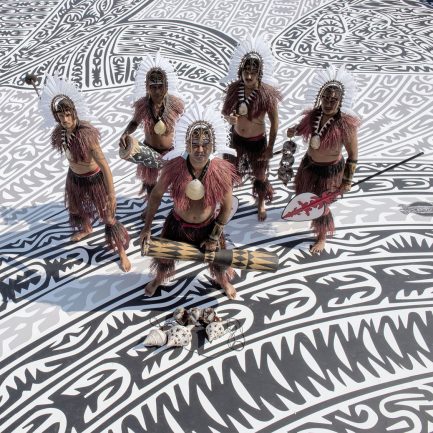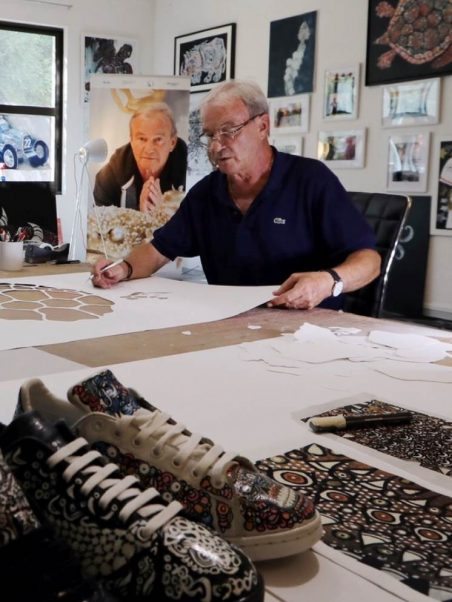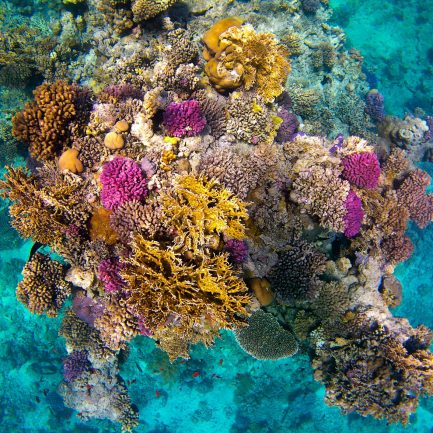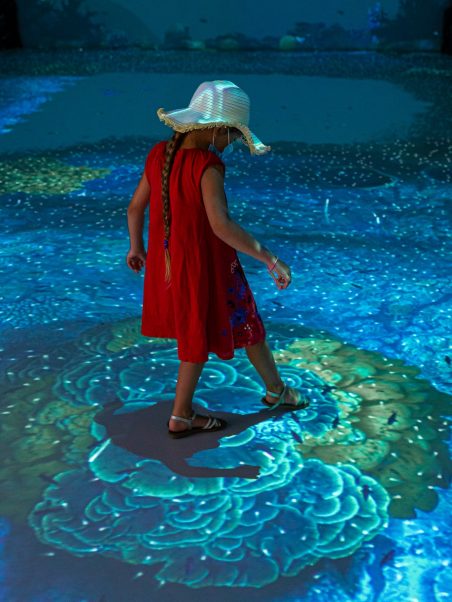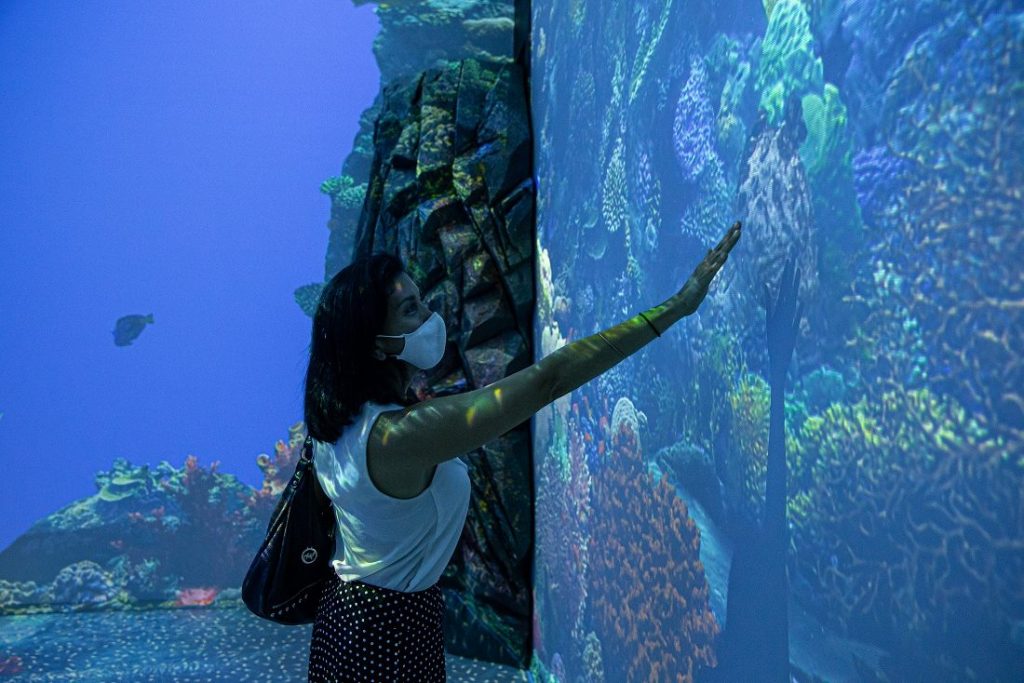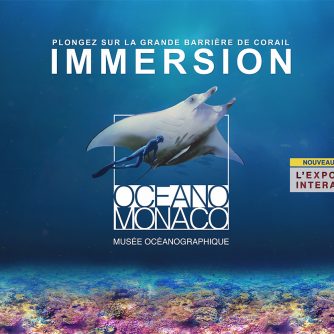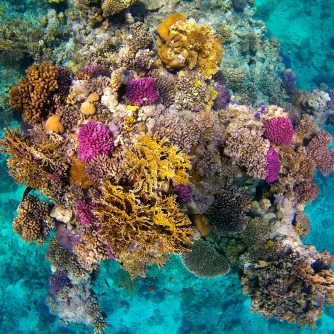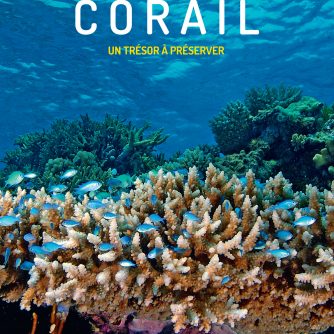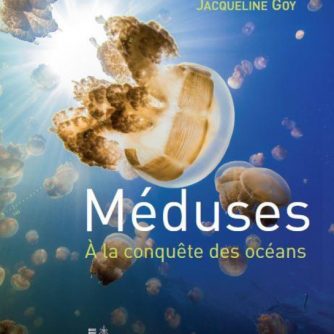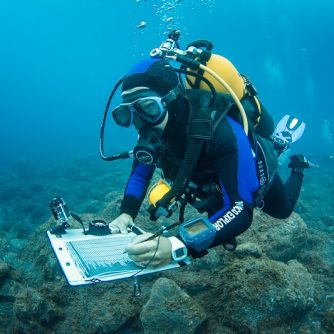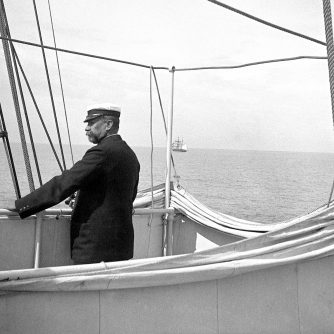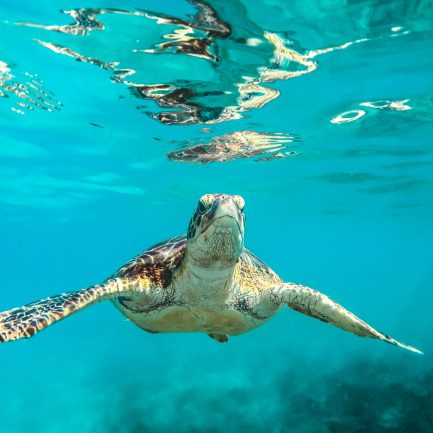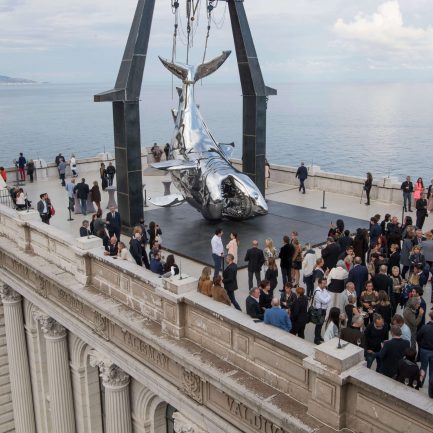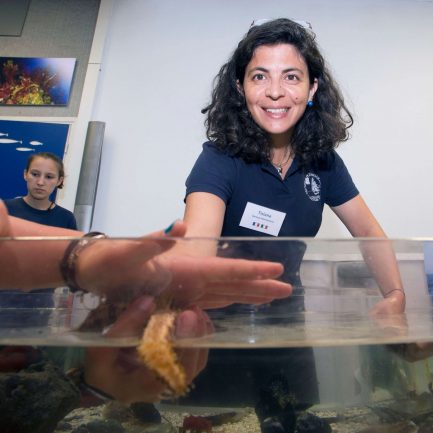- Home
- Exhibitions
AN IMMERSIVE AND INTERACTIVE EXPERIENCE
OUT OF THE ORDINARY FOR ALL
This summer, become a real field reporter and go on a mission to the heart of the poles at the Oceanographic Museum of Monaco,
to meet their emblematic ecosystems!
The polar worlds in the heart of the Oceanographic Museum
Projection walls 9m high!
a trip in 6 acts
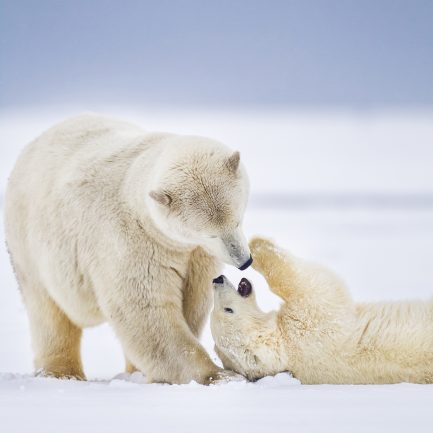
STEP N°1
MEETING WITH
A SHEBEAR
AND HER CUBS ON THE PACK ICE
This majestic emblem of the Far North, the polar bear, is an endangered species, and the number of individuals has a tendency to decline. There are two main reasons for this: global warming, which is causing the disappearance of its habitat, and melting ice which is putting its search for food at risk. Especially as its prey, principally certain species of seals, are endangered for the same reasons. These giants whose life is closely linked to pack ice are gradually moving away from the northern regions and sometimes moving dangerously close to villages in search of food.
To illustrate their vulnerable situation, the polar bears are shown in a compromised decor. The collapse of whole sections of icebergs and the constant cracking of the ice under the feet of the visitors are reminders of how precarious their habitat is.
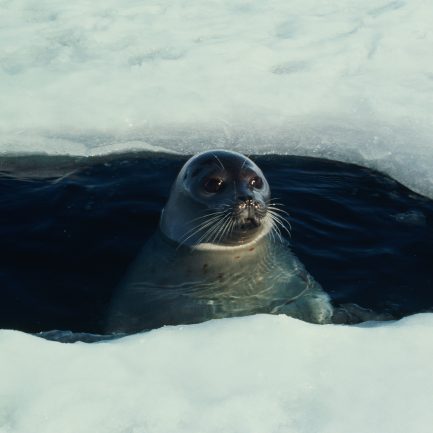
STEP N°2
UNDER THE PACK ICE, INTERACTING WITH BELUGAS, SEALS AND NARWHALS
To escape from predators, seals usually seek refuge on pieces of pack ice on the open sea. Because of the increasingly rapid melting of these ice floes, these large mammals are forced to adapt their lifestyle and travel greater distances in search of new shelters. For their part, belugas are endangered by pollution and disturbed by the exploitation of underwater mineral wealth. These large cetaceans, also called white whales, are being forced to dive deeper and for much longer to find food.
By interacting with these species, visitors are led to feel empathy for these mammals. By becoming aware of their environment, they will realise that a whole ecosystem is being modified and, as a result, more fragile.
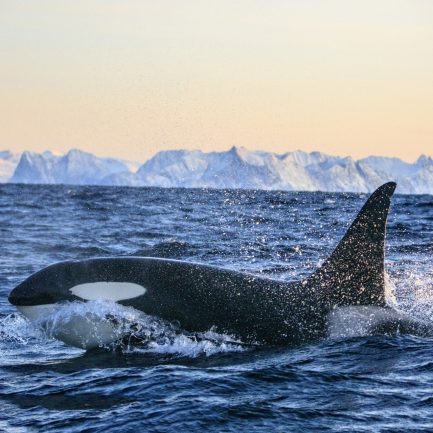
ÉTAPE N°3
KILLER WHALES LEAP OUT OF THE WATER WHILE SEA ELEPHANTS LOUNGE ON THE SHORES
The Antarctic region possesses a rich, unique biodiversity where killer whales and sea elephants have evolved far from all human predation for thousands of years. Today, however, humans no longer hide their claims to these distant lands: killer whale overfishing has begun.
Immersed in the sublime decor of the South Pole, between the water ballet of these majestic marine mammals and the strident cries of the sterns and the colonies of sea elephants, visitors grasp the reality of a world totally unknown to them, while at the same time they become aware of the urgent need to protect this world.
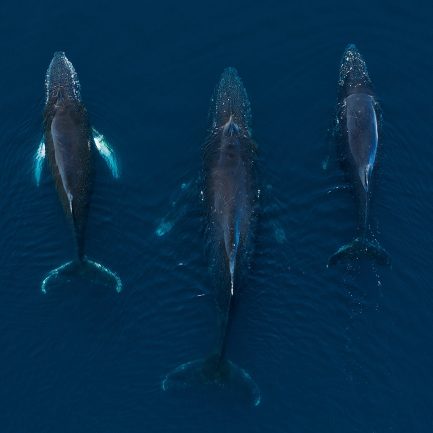
STEP N°4
FEEDING TIME FOR THE WHALES
Krill, the base of the food chain, is the diet of many underwater species. Yet, the abundance of these tiny crustaceans is also endangered by overfishing.
Witnessing the gargantuan meal of humpback whales reveals not only how organised they are and their clever hunting methods, but also their dependence on this food.
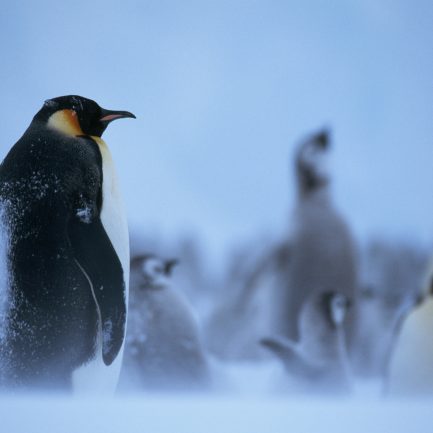
STEP N°5
A COLONY OF PENGUINS IN A BLIZZARD
The famous emperor penguins of the Antarctic have developed a wonderful globally unique organised lifestyle which allows them to survive in this particularly hostile environment. However, they too are endangered by the lack of food resources, global warming and melting ice.
Adults have to travel further and further out at sea to find food at the risk of returning too late to feed their chicks. Thus weakened, penguin populations tend to decline.
Wrapped in the blizzard at the centre of the penguin colonies, visitors can try to remove the snow in order to see them. By becoming aware of the bitterness of the climate conditions the public will come to appreciate the exceptional nature of their environment.
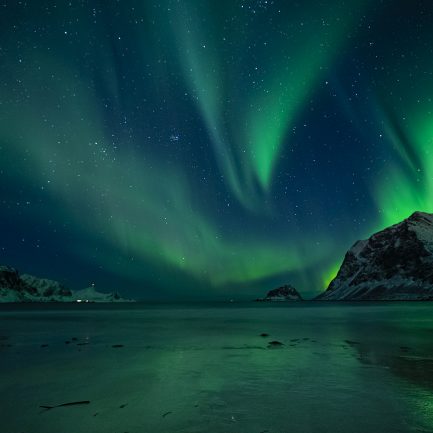
STEP N°6
POLAR AURORAS IN THE STARRY ANTARCTIC SKY
This final scene is a serene invitation to be enraptured by the permanent source of inspiration which is nature. A lyrical conclusion where the subtle and the fragile mingle to magnify the magnetic and atmospheric phenomena responsible for this celestial spectacle.
Technology Serving Knowledge

Contemplating polar auroras, diving beneath icebergs in search of seals, beluga whales and narwhals, espying penguins through the blizzard… Or how can the limits of reality be pushed back to offer a unique experience which mobilises living beings? The “IMMERSION” room, with almost 650m2 of projection space, offers to thousands of visitors the unique and deeply moving sensation of being at the poles.
A journey in which they can interact with the content, the environment and the species.
This experience which is part of the “Polar Mission” exhibition and the Oceanographic Museum of Monaco was created thanks to a virtual replica of these extreme regions and the species which inhabit them. This change of scenery was achieved thanks to exceptional technologies and monumental projection equipment. The whole project was scripted by a design team in close collaboration with the Museum. Computer-generated images provide exceptional scenographic productions for places with cultural and scientific mediation activities, without sacrificing the rigour and requirements demanded by a site like the Oceanographic Museum.
One of the goals of this creation is to build on the sense of wonder experienced by the visitors to make them aware of the threats that are hanging over the poles and the risks they represent for the whole planet. We want to create a link between Man and an ecosystem which is generally beyond his reach, to be spectacular while making sense, to dazzle while raising awareness. The device is also based on an educational mode that allows the Oceanographic Museum’s instructors to take the lead of each session and guide the visitors in a more scholarly experience.
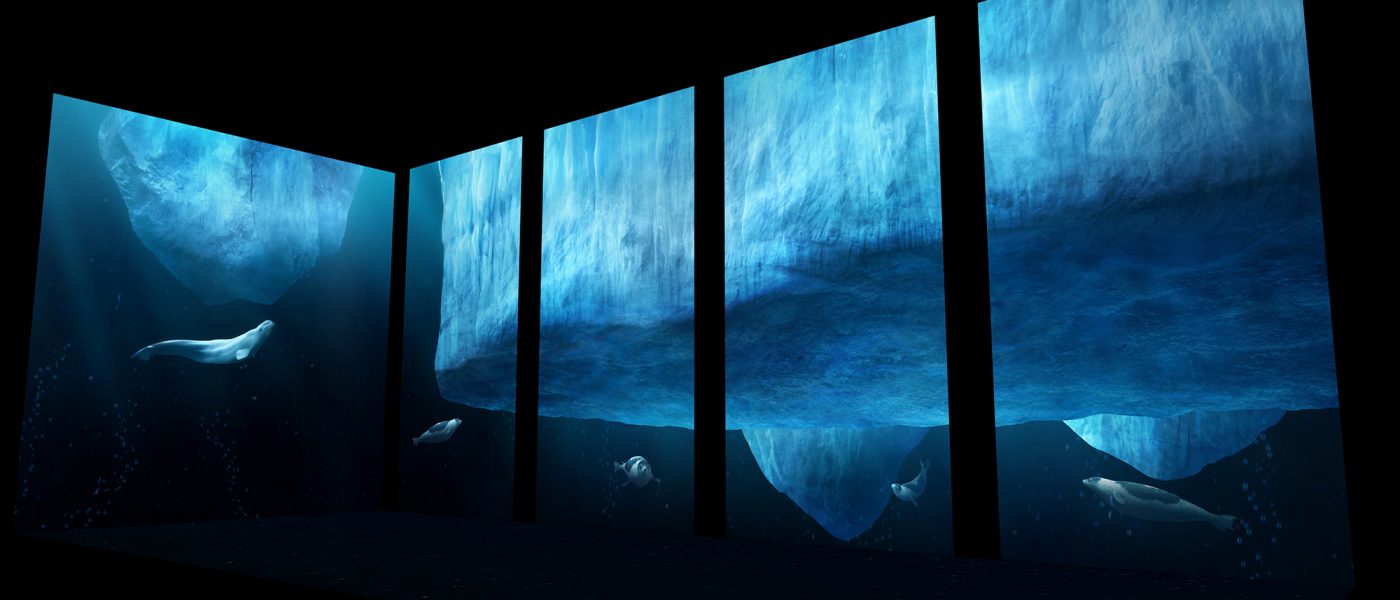
A tool at the service of pedagogy
During holiday periods and on the occasion of welcoming school students, the educational service of the Oceanographic Museum offers dedicated animations. A tailor-made visit adapted to the young audience is made possible thanks to a specially designed «pedagogical mode». The animator can, on request, freeze certain scenes of the device to better observe a species or comment on its behavior. A multimedia library is also accessible to the animator who can project at any time an educational sheet, a film or an anatomical sheet to enrich the experience.
HIGH TECH
This “life simulator” is designed around a mix of matte painting, computer-generated imagery and real time 3D animations. Matte painting is a cinematographic process whereby one or more animated scenes are integrated in postproduction in a decor painted on a plane surface. A real-time computer-generated image is made live according to the actions of the visitors or the situations, unlike images made in post‑production.
The device used in the “IMMERSION” room juxtaposes these two techniques to enhance realism and speed of interaction.
See also
Previous exhibitions
- Home
- Exhibitions
As part of its programme of actions to raise awareness of and support for the protection of coral reefs, the Oceanographic Museum wishes to exhibit the Monegasque artist Michel Aubéry for a third time, from 4 November 2020 to 3 February 2021.
And in this year 2020 dedicated to the coral, Michel Aubéry was inspired by the coral reefs and the animals that live there.
Production of the new works has been underway since the beginning of 2020.
Michel Aubéry
Born in Monaco, Michel Aubéry started drawing at the age of nine with pencil and Indian ink. Dragons and all sorts of fantastic animals were his first subjects.
As a teenager, he exhibited his gouaches for the first time at the Rauch Gallery in Monte-Carlo in 1962 under the High Patronage of H.S.H. Princess Grace of Monaco.
In 2007, he started painting again after meeting the famous painter-sculptor Philippe Pastor, who made him want to share his passion.
Since 2009, he has regularly exhibited his work and this is the third time that the Oceanographic Museum has offered its visitors the opportunity to discover his work.
An exhibition of paintings
Nearly forty works are exhibited in the Conference Room of the Oceanographic Museum, including about twenty for the first time. All of them are dedicated to the marine world, a favourite subject of the artist. At the request of the Oceanographic Museum, he agreed to focus on the reef world to create new works in shimmering colours.
“My inspiration comes naturally. It’s a bit of a subconscious thing. Sometimes I dream at night and that gives me ideas. Very often the paintings I am going to make are already present and clear in my head. It’s spontaneous. I don’t need to look at other works to express myself. »
Michel Aubéry
Two passions are better than one!
After graduating from the School of Decorative Arts in Nice, he became an art teacher at the “Famous Artists School” in Monaco for several years. He also distinguished himself in the sporting field, first as a player, then as a trainer and finally as President of the AS Monaco Association, the amateur part of the club. The press then said of Michel Aubéry that he ” formally refutes those who try to oppose culture and sport, by devoting a great passion to football “.
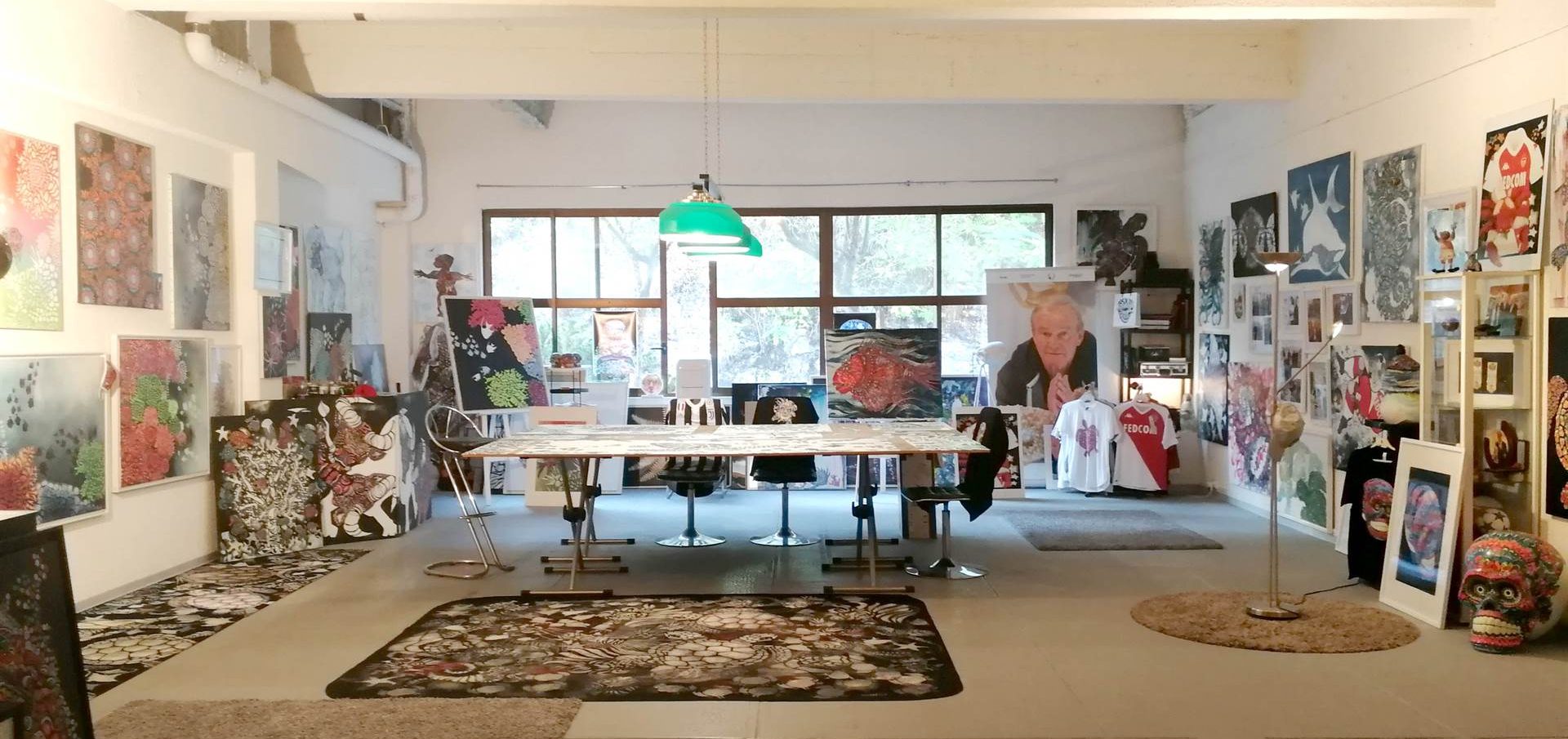
No support resists him
Helmets, footballs, surfboards, mats, shoes, plastic bottles and even racing cars! In 2014, at the request of Jacques Nicolet, president of Oak Racing, he customised the bonnet of a Le Mans 24-hour race car. Michel Aubéry speaks out everywhere and on everything! In this year 2020, darkened by the crisis of the COVID 19, Michel Aubéry does not let himself be defeated, he creates masks with bright colors taking again elements of his works.
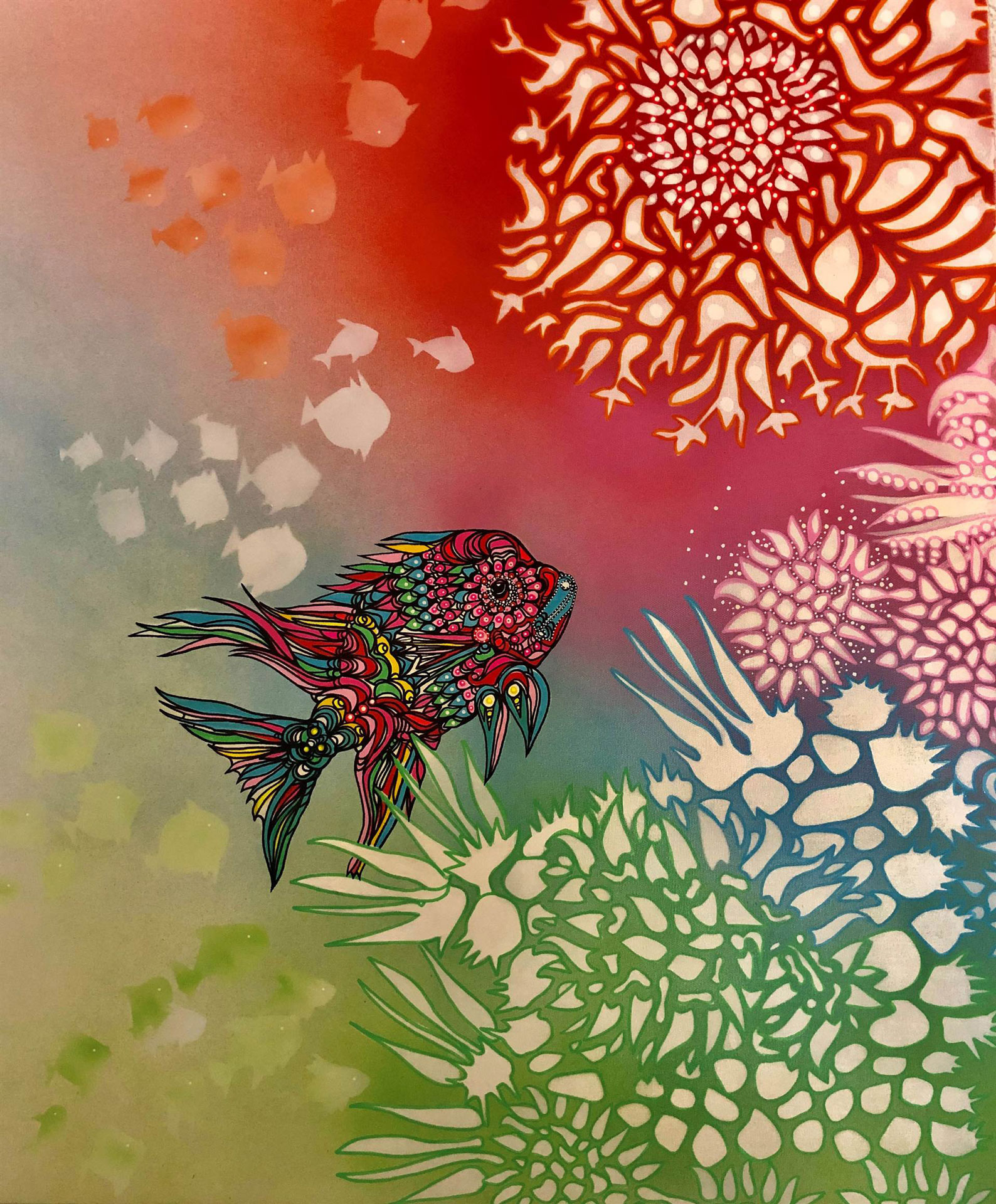
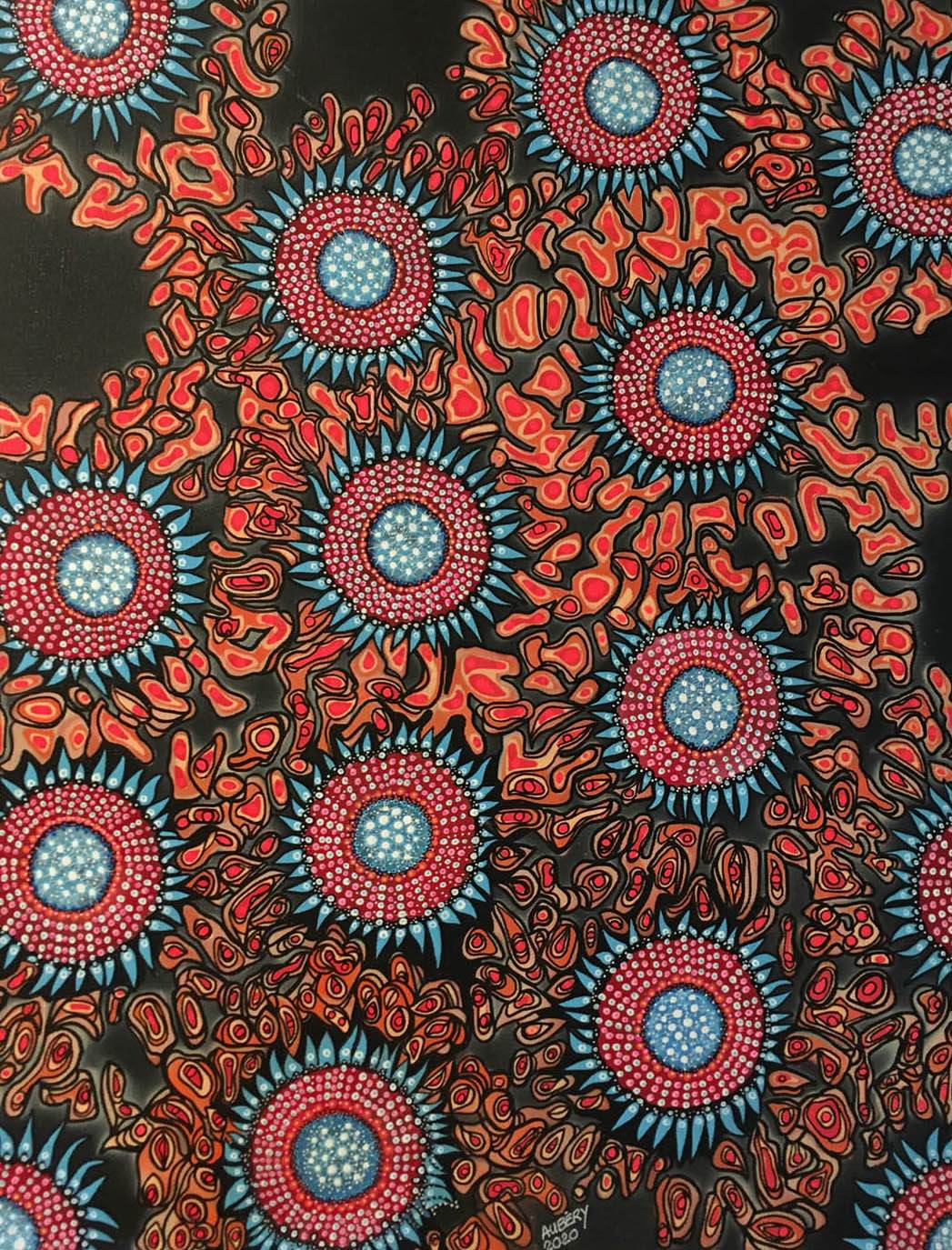
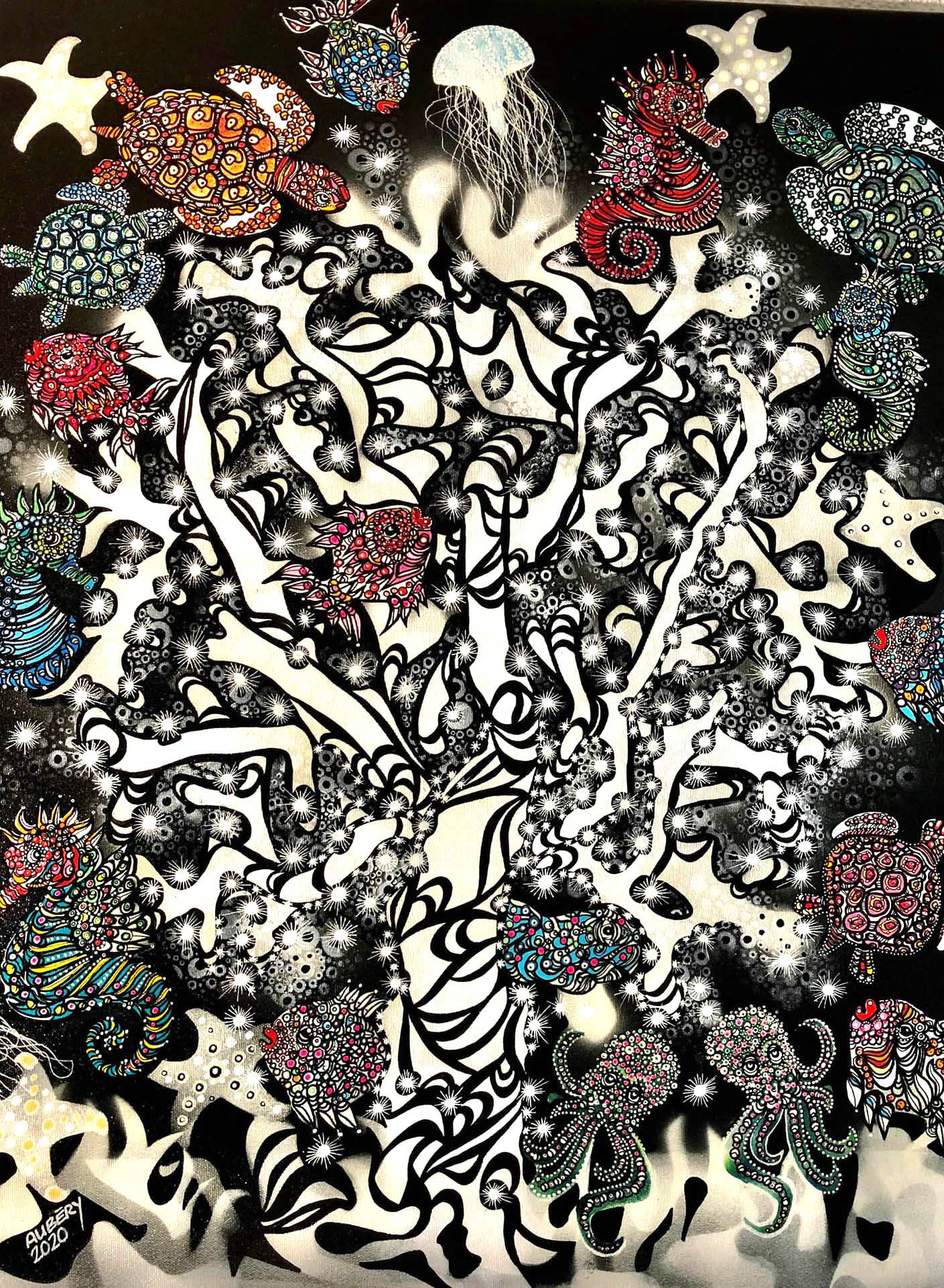
See also
Previous exhibitions
- Home
- Exhibitions
AN IMMERSIVE AND INTERACTIVE EXPERIENCE
OUT OF THE ORDINARY FOR ALL
This summer, dive on the Great Barrier Reef at the Oceanographic Museum of Monaco,
to meet its most emblematic species!
Welcome to our life simulator
in the heart of the Oceanographic Museum
Get ready for some great encounters
Enter the IMMERSION hatch, get advice from your dive guide and discover the different species you might encounter. Here, all encounters are possible in a single dive: from humpback whales to carpet sharks, from barracudas to fluorescent corals…
Let's go for a trip to the surface
Contemplate and interact with the species you encounter, as if you were diving.
Before your eyes is revealed an incredible biodiversity sheltered in the heart of one of the 7 natural wonders of the world, the Great Barrier Reef, the largest coral ecosystem on the planet. Discover the richness of life on the Great Barrier Reef from sunrise to sunset.
Catch your breath!
At the end of your virtual dive, at the crossroads of contemplation and interaction, discover that coral reefs, true oases of life, are unfortunately threatened and that it is necessary to act to protect them
IMMERSION In a few words :
A fully reconstructed living environment that will react to your movements.
Species modeled from real images, movements and interactions recreated from behaviors observed in the wild to offer you a realistic diving experience.
Day and night scenarios have been freely imagined to offer you a “single dive” to meet the most emblematic species of the Great Barrier Reef.
Projection walls 9m high!
Day and night diving
TRIBUTE TO THE
GREATER CORAL BARRIER
Scripted by an international team of designers, in close collaboration with the Oceanographic Museum and its partners, as well as divers and biologists, the experience is intended to be both entertaining and engaging.
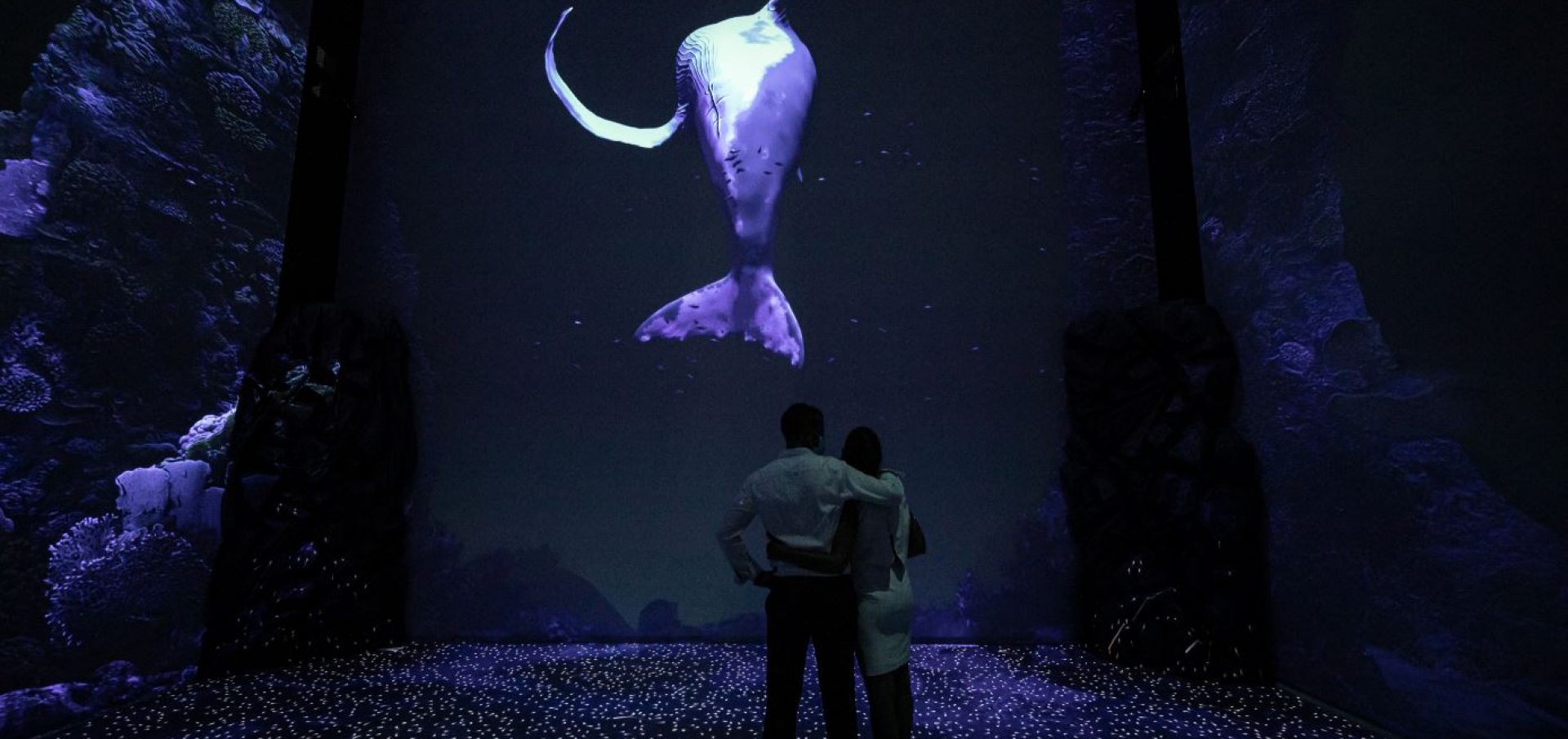
Emblematic species
The technologies used have a realistic and natural rendering thanks to the real time projection system. Get into the skin of a diver exploring his environment. Interact with the different marine species and have fascinating encounters!
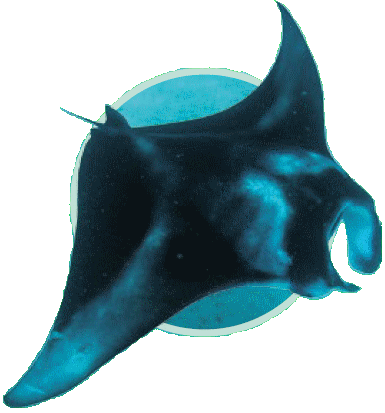
MANTA RAY
Mobula birostris
Lives between -1 and -120 m
Size up to 7 m
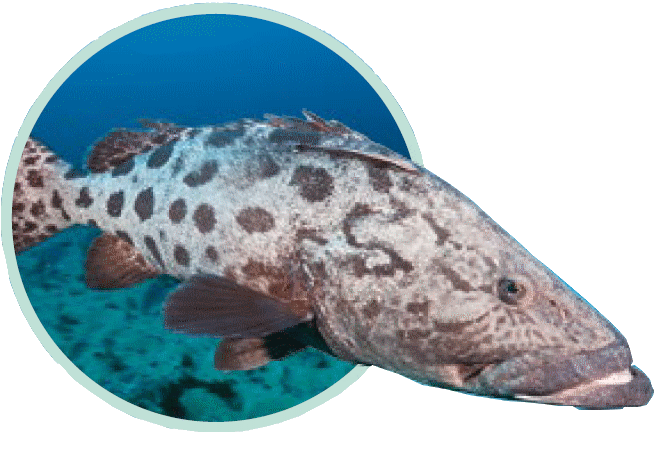
Grouper PATTY
Epinephelus tukula
Lives between –10 and –400 m
Size up to 2 m
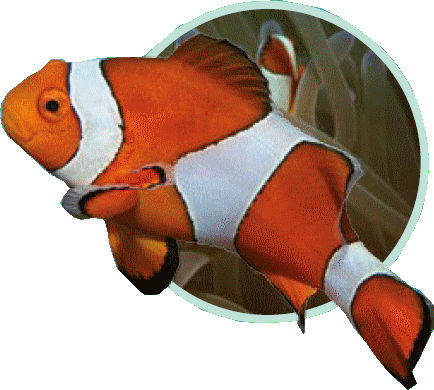
FISH CLOWN
Amphiprion ocellaris
Lives between –3 and –15 m
Size up to 11 cm
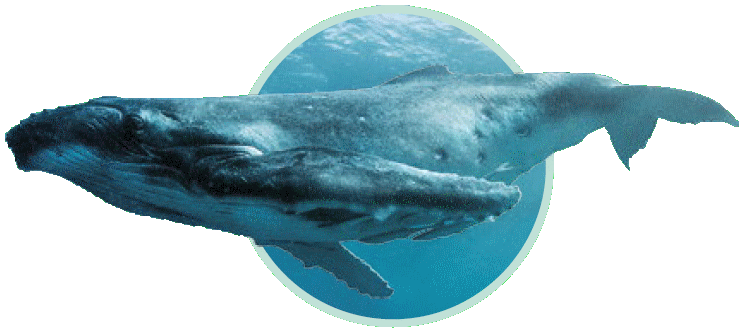
HUMPBACK WHALE
Megaptera novaeangliae
Lives between –1 and –170 m
Size up to 19 m
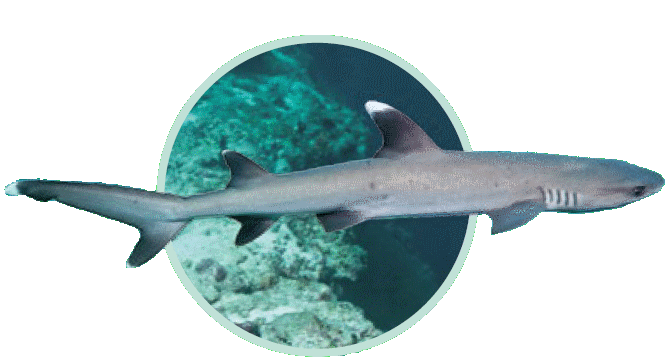
WHITE-TIPPED SHARK
Triaenodon obesus
Lives between -1 and -330 m
Size up to 2 m and more, for large individuals
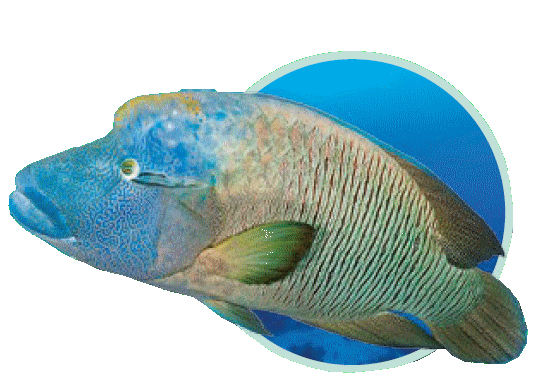
HUMPHEAD WRASSE
Cheilinus undulatus
Lives between –1 and –60 m at least
Size up to 2,30 m
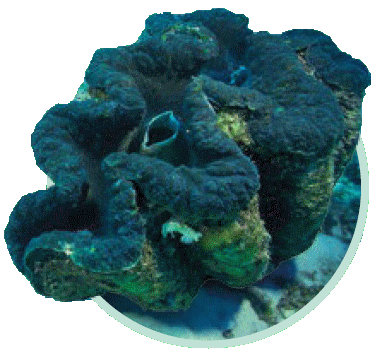
GIANT BEECHNUT TREE
Tridacna gigas
Lives between –50 cm and –15 m
Size up to 1,50 m
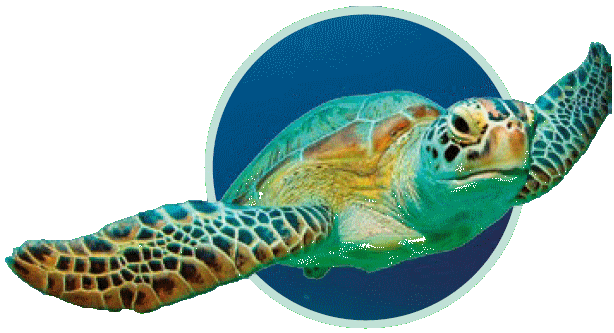
GREEN TURTLE
Chelonia mydas
Size the carapace can up to 130 cm long
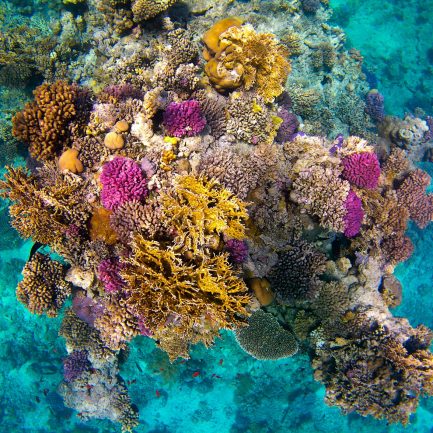
AN ECOSYSTEM IN DANGER
At over 2,300 km in length and 348,000 km² in area, the Australian Great Barrier Reef is the largest animal-made structure on the planet. This feat is the result of small animals that are great engineers: the reef-building corals. They secrete a calcareous skeleton making them the main actors of underwater buildings. Commonly called “hard corals”, there are about 1,600 species. Since 1981, the Great Barrier Reef has been listed as a UNESCO World Heritage Site, joined in 2008 by the double barrier reef of New Caledonia.
Although they cover only 0.2% of the oceans, coral reefs are home to 30% of marine biodiversity. These oases of life, essential to mankind in many ways, are nevertheless threatened on a large scale. As part of its 2020 thematic programme devoted to coral reefs, of which the “IMMERSION” exhibition is the high point, the Oceanographic Museum is offering as many people as possible the opportunity to witness the beauty and fragility of these ecosystems.
Source: Coral, A treasure to preserve. Editions Glénat, in partnership with the Oceanographic Institute, 2020
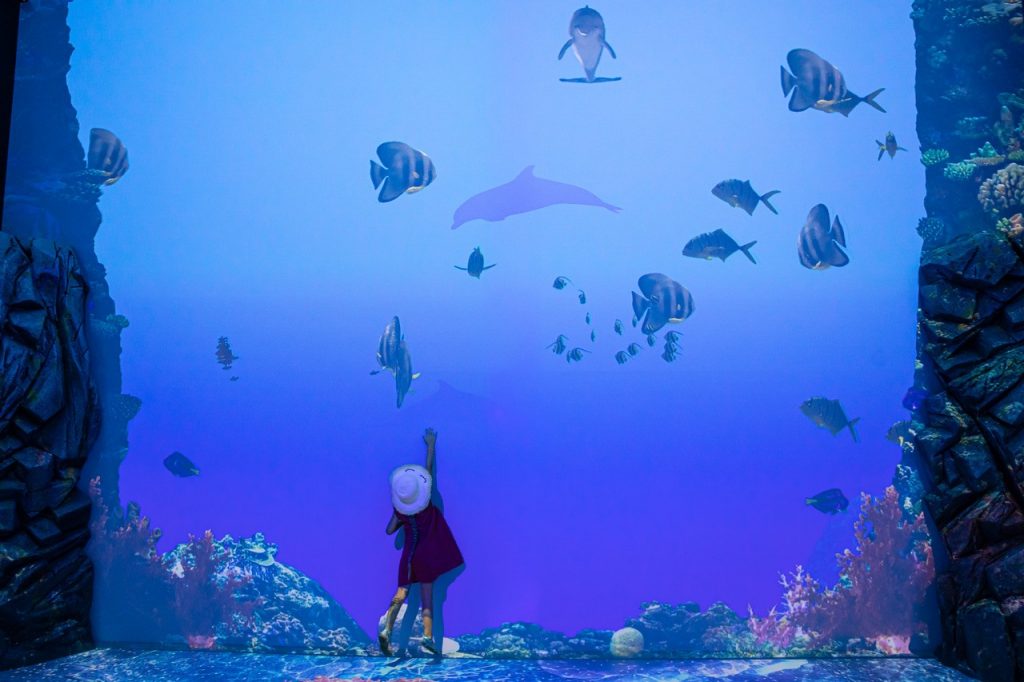
Our partners
Today, the Sovereign Prince of Monaco is by right the Honorary President of the Institute’s Board of Directors, which is composed of ten members who maintain close ties with the Principality. Two of them are also appointed by the Sovereign Prince, today H.E. Mr Bernard Fautrier, Vice-President and Managing Director of the Foundation, Minister Plenipotentiary in charge of missions to the Ministry of State for issues related to sustainable development, and Mrs Marie-Pierre Gramaglia, Government Counsellor – Minister of Equipment, Environment and Urban Planning in the Government of Monaco. As a result, the Government of Monaco is one of the closest partners of the Oceanographic Institute.
In June 2006, H.S.H. Prince Albert II of Monaco created his Foundation to respond to the worrying threats to our planet’s environment and to promote sustainable development. At the international level, the FPA2 mobilizes citizens, politicians, scientists and economic actors to defend nature, the common heritage of humanity. The APF2 supports projects to protect and restore coral reefs impacted by climate change. It is committed to developing Marine Protected Areas to safeguard these ecosystems, which are essential to biodiversity and the livelihood of local populations.
For nearly a century, Rolex has supported pioneering explorers, pushing the boundaries of human endeavour. With the Perpetual Planet campaign, launched in 2019, Rolex is making a long-term commitment to help explorers protect the environment.
Rolex’s commitment to the ocean is reflected in partnerships with the National Geographic Society and Sylvia Earle’s Mission Blue initiative, for example, and in the Principality of Monaco, beyond the Oceanographic Institute, the company supports the Monaco Blue Initiative, Monaco Ocean Week and the Yacht Club of Monaco.
As Monaco’s leading bank, CFM Indosuez is passionate about its commitment to society and the environment. Its support for the Oceanographic Institute aims to accompany its teams in their mission to raise awareness, convince and engage as many people as possible in protecting the ocean and its biodiversity. Created in 1922 by Sovereign Order, CFM Indosuez is both internationally oriented and firmly rooted in the Principality, with 30% of its shareholders being Monegasque. The bank has adopted the raison d’être of its majority shareholder, the Crédit Agricole Group: to act every day in the interests of its customers and society.
In charge of managing, operating and developing France’s 3,000 stations, SNCF Gares & Connexions is committed to constantly improving the quality of its operations, inventing new services and modernising its assets for its 10 million passengers and visitors every day. Born of the conviction that stations are places of life in their own right, it is constantly enriching these “urban villages” in order to contribute to the dissemination of culture to all audiences. In close collaboration with the major cultural institutions, both national and local, SNCF Gares & Connexions designs more than 100 exhibitions, interventions and artistic events each year, most of them new, throughout France. Art in stations, as a new invitation to travel.
For its 50th anniversary, October 2019 marked the inauguration of the South extension of CAP3000, with 135,000 m2 offering an experience that goes beyond shopping, in a grandiose site with a sea view. Following the opening of the immersive 360° video space OCEANS, and CAPSULE@CAP3000, its innovative concept store dedicated to digital trends where art and culture meet, CAP3000 is rethinking itself as a real place to live. Around an enhanced experience with ever more sensory experiences thanks to 70 new stores, 250 boutiques, 40 panoramic restaurant spaces with a sea view in the long term and an expanded range of services simplifying the shopping experience, around a responsible and socially responsible CSR approach. The first centre in the world to be awarded the Biodivercity label, and the 4th largest employer in the Alpes-Maritimes, CAP3000 is committed to being Europe’s most beautiful new-generation shopping centre by the sea by 2020.
Every month, the Le Parisien-Aujourd’hui en France brand reaches 22 million French people* with a diversified news offering (national, international and local news). 3It is the world’ssecond largest press brand and owes its success to its non-partisan editorial line and to the fact that it helps its readers to understand the world of today and tomorrow. Le Parisien – Aujourd’hui en France, the number one newspaper in France in terms of circulation, has a daily circulation of 290,355 copies**. Le Parisien also publishes Le Parisien Éco every Monday and the news magazine Le Parisien Week-end every Friday. LeParisien.fr is the3rd largest news brand in France with 19.6 million internet users***.
*ACPM One Next 2019 – Brand 30 J
CMPA – DFP – Le Parisien/Aujourd’hui en France coupling – PV 2018/2019
Médiamétrie Internet Global Sept. 2019
The magazine for 7-12 year olds, to learn while having fun!
Every month, Science & Vie Découvertes offers its young readers 84 pages to devour, with: a large thematic dossier, news on animals, science, cinema, books, exhibitions… comics and games. Science & Vie Découvertes allows children to understand the world around them on their own and leads them to new paths of exploration.
An ideal magazine to awaken your curiosity, develop your imagination and discover the world in a fun and interactive way.
Science & Vie Découvertes is every year : 12 issues + 4 special issues
Science & Vie Découvertes is also on the web with news, videos, games…
Special program around the great expeditions of Laurent Ballesta
In September on ARTE and arte.tv
Since 2013, ARTE has been following the Gombessa expeditions of biologist and underwater photographer Laurent Ballesta with the aim of bringing these spectacular expeditions to the general public to discover new marine ecosystems and behaviour. In July 2019, ARTE’s cameras followed him on his last major expedition: Planet Mediterranean(Gombessa V). Trailer:
https://youtu.be/tBeGrieGzQY
To accompany the broadcast of this exceptional film, ARTE will propose the re-broadcast of
700 sharks in the night
(about another expedition by Laurent Ballesta) and new documentaries about the sea and the oceans such as
The Drunkenness of the Deep, Orcas in Peril
…
See also
Previous exhibitions
The Odyssey of Sea Turtles - The exhibition
MARTIN COLOGNOLI - CORAL GUARDIAN
- Home
- Exhibitions

The Coral Guardian association exhibits the coral at the Oceanographic Museum of Monaco
The CORAIL photographic exhibition allows us to discover the remarkable story of traditional Indonesian fishermen, from the small island of Serava Besar off the west coast of the island of Flores, protecting and restoring the destroyed ecosystem on which they directly depend for their livelihood: the coral reef. This island is located in the centre of the Coral Triangle, the epicentre of the planet’s marine biodiversity . 6 million km², 76% of the coral species, and 56% of the coral reef fish in the Indo-Pacific region. It has more biodiversity than anywhere else in the world.
The CORAIL photographic exhibition will run from June 20, 2020 to January 3, 2022.
Martin Colognoli
In 2012, Martin Colognoli, a marine biologist, co-founded Coral Guardian, a French non-profit association under the 1901 law. Coral Guardian is dedicated to the conservation of coral ecosystems thanks to the local communities that depend on them, to raise awareness and to participate in scientific discoveries.
Survivors from the dinosaur era
More than twenty large-format images immerse visitors in the fragile world of coral reefs, highlighting the harmony between humans and nature: a message that is both urgent and full of hope.
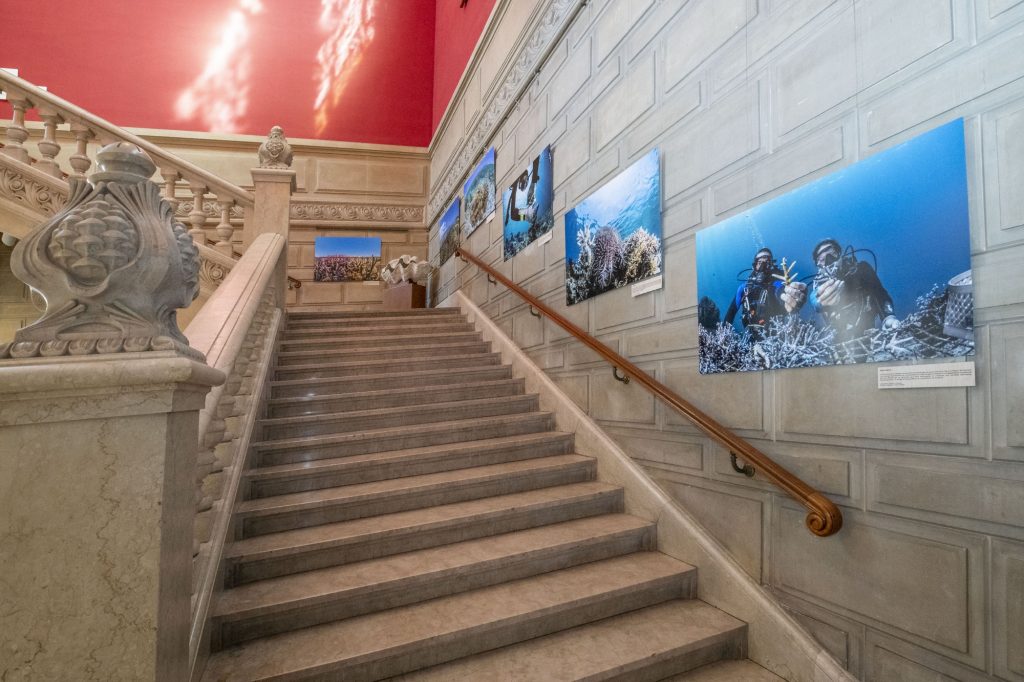
You tell me, I forget. You teach me, I remember. You involve me, I learn.
Benjamin Franklin.
Serial killers
Coral Guardian is distinguished by the development of concrete actions of reef restoration on the ground involving local populations. Through its actions, the association has acquired a unique experience in the field. The involvement of the people who depend directly on these ecosystems has allowed the creation of a sustainable restoration model based on science and practice. Indeed, the commitment of the main stakeholders is a key factor for success. The projects then have a lasting and concrete impact on the situation of the communities, who take ownership of them.
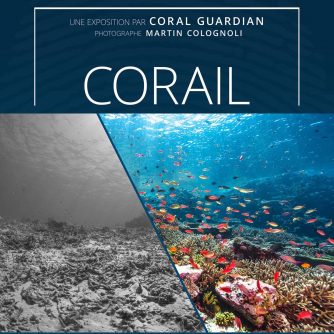
We are the solution
Rising water temperatures, sea levels and ocean acidity (effects of climate change) are threatening coral reefs around the world. Scientists estimate that we could lose up to 70% of the world’s coral reefs in the next 50 years. Overfishing and highly destructive fishing techniques, such as bomb fishing and cyanide, are responsible for depleting fish stocks to a level that may be irreversible. Despite the growing threats, there is hope. The reefs of the Coral Triangle have survived for millions of years and some species are coping surprisingly well with the effects of climate change. This is why the Coral Triangle holds secrets that raise hope among scientists. The greatest source of hope for the Coral Triangle is its people who depend on it so heavily.
To be discovered in the staircase of the Princess-Alice Hall...
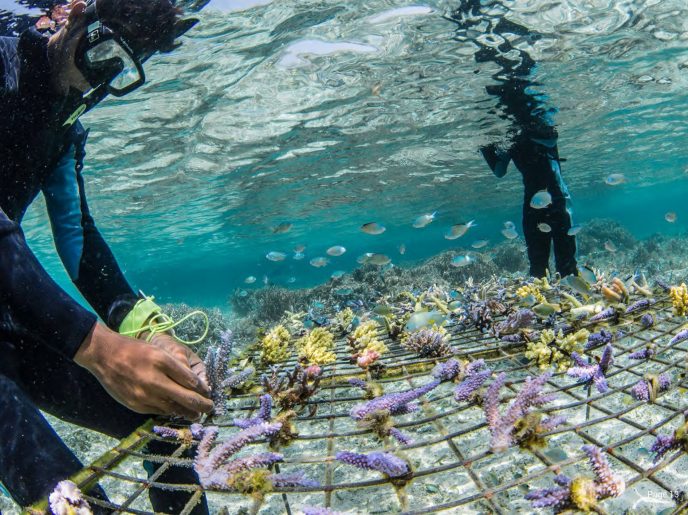
The team is in the midst of transplantation. The coral colonies are fragmented and then firmly attached to the metal support. One month later, these corals will have, thanks to their calcareous skeleton, enveloped the structure to fix themselves and will then begin their growth towards the sun.
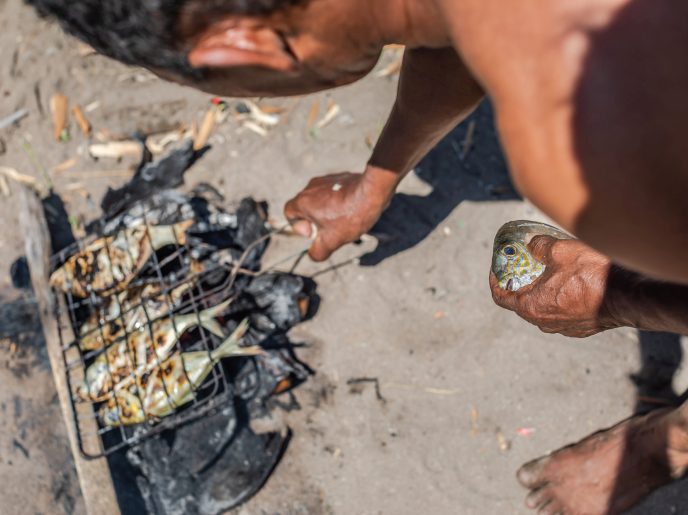
In this island fishing village, fish is the main source of protein. The average consumption is 4 to 5 kilos per day to feed a family. The fish species consumed are mostly dependent on the coral reef.
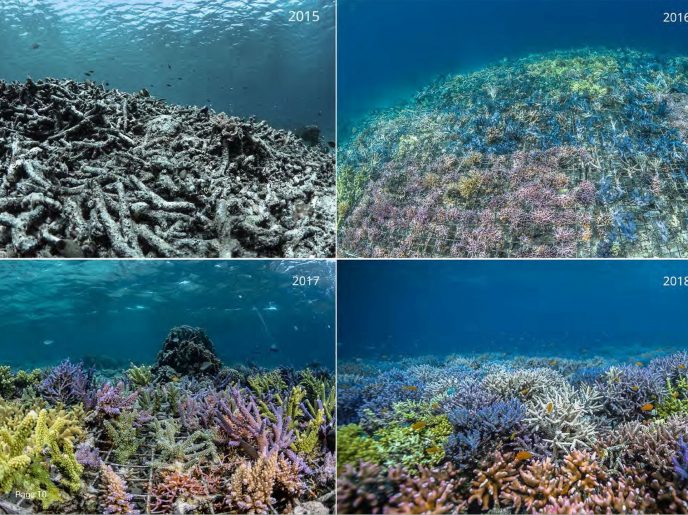
The evolution of an area restored in just three years. This is a perfect illustration of the return of the coral reef to an area where the bottom is constantly moving. These structures provide solid support for transplanted colonies. The environmental conditions are favourable for the return of life.
See also
The Odyssey of Sea Turtles - The exhibition
- Home
- Exhibitions
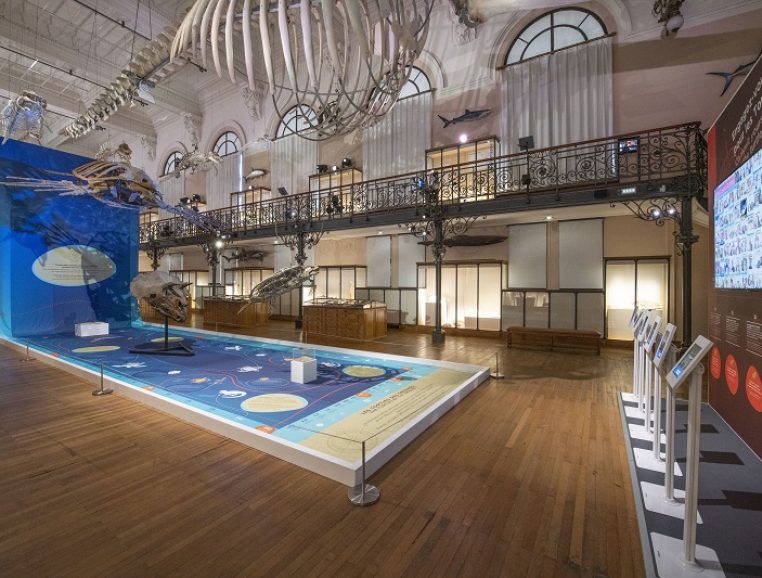
From their appearance on earth millions of years ago to the threats to their existence, from the magic of egg-laying to the actions taken to preserve them, the great adventure of marine turtles is told at the Oceanographic Museum in the brand new exhibition The Sea Turtle Odyssey.
Echoing the visit to the brand new space presenting the turtles of the Monegasque Care Centre, the exhibition familiarises us with the history of this fascinating and mysterious animal. Among other things, it allows us to understand that if we are potentially on the verge of extinction because of our daily practices, both individual and collective, each of us is also part of the solution for their conservation.
The Oceanographic Institute, the Prince Albert II of Monaco Foundation, the Explorations de Monaco and all the partner organisations are mobilising for the turtles through their actions without borders, and invite you to participate actively in their protection.
To be seen before the beginning of January 2020!
Survivors from the dinosaur era
With 150 million years of existence, sea turtles have already survived a massive extinction crisis that saw the disappearance of dinosaurs and many reptiles. This module allows you to discover the remains of some of the ancestors of today’s marine turtles, and in particular the reconstruction of a 66 million year old Archelon fossil, measuring 5m by 2m50!
a small family
As one of the oldest animals on our planet, sea turtles have spent millions of years adapting to become the animals we know today. Only seven different species of sea turtles still frequent our oceans. From the shallow seagrass beds of the Indian Ocean to the colourful reefs of the Coral Triangle, from the white sandy beaches of the Pacific to the shores of the Mediterranean, discover the incredible odyssey that these extraordinary animals still live.
Serial killers
After surviving many natural hazards, marine turtles are now threatened by humans at all stages of their development despite their protected status. Their formidable odyssey has become a real obstacle course, on land and at sea, as they know no borders. This module looks at the obstacles that litter their itinerary, such as coastal occupation, poaching, the impact of fishing, pollution, plastic waste, etc.
Monaco, a haven for turtles
At the instigation of H.S.H. Prince Albert II of Monaco, spokesman for the cause of the oceans in international bodies, Monegasque players are joining forces to protect marine turtles… Discover through this exhibition the numerous actions carried out by the Principality aimed at the general public, decision-makers and those working in the field
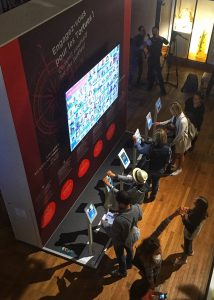
We are the solution
At the Museum, you can now make an individual commitment to the turtles in an original way and make it public immediately!
At the end of the tour, when the threats to the turtles are obvious, as well as the fact that each of us is part of the problem, we invite everyone to get involved to become part of the solution! 6 commitments for simple daily gestures that participate, in a way, to a common work: each photo taken composes a mosaic illustrating a sea turtle…
At the Oceanographic Institute, we believe in the power of the individual and the impact he or she can have in their daily choices!
See also
THE LITTORAL ZONE
MARC QUINN - 2012
- Accueil
- Exhibitions
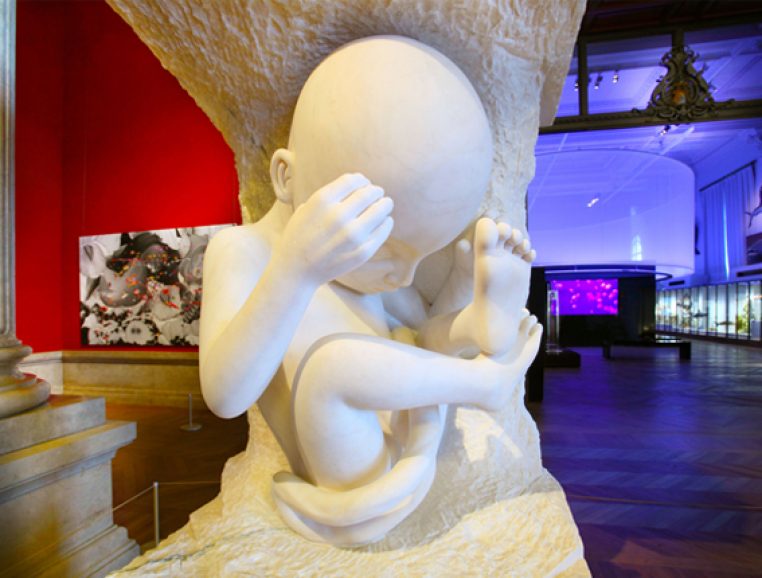
The exhibition ”The Littoral Zone” by Marc Quinn, which lasted from 12 May to 15 October 2012, drew in 377,000 visitors to the Museum.
It gave all these visitors food for thought as to the origins and cycle of life, via some captivating works.
Faithful to the wish of its founder Prince Albert Ist, who wanted to ”combine in a single splendour the two guiding forces of civilisation: Art and Science”, the Temple of the Sea opened the doors of the fascinating universe of Marc Quinn to the public.
The mere title of the event was an invitation to explore each room of the Museum as a space where the boundaries between the land and the sea, life and death and museum and modernity disappeared like waves washing up on the shore.
In total, around sixty paintings, sculptures and installations were on display in the rooms of the Museum, and on its large forecourt and panoramic terrace.
They included colossal marbles illustrating the growth of the foetus over the nine months of pregnancy, fascinatingly realistic oil paintings and even the artist’s famous self-portrait, made from his own frozen blood.
The work Burning Desire, a flamboyant hybrid red orchid over four metres in size, has even become a permanent part of the landscape in the Principality of Monaco, where it is now installed in the famous Place du Casino.
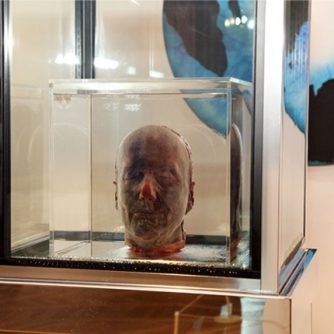
A dialogue between the past and the present, ”The Littoral Zone” breaks the mould by combining historical collections with contemporary works. Visitors were able to dream, enrich their knowledge and marvel at this large-scale exhibition, a truly alchemical blend of the artist’s universe and the world of the oceans.
See also
SHARKS
Going beyond misunderstandings
- Home
- Exhibitions
A sensational exhibition about sharks
From 2013 to 2017, the Oceanographic Museum offered its visitors a sensory exhibition to meet the sharks: Sharks, the Sensory Exhibition.
Through this new experience, a large audience was able to overcome their prejudices and discover the true nature of these sea lords.
This exhibition is no longer on display at the Oceanographic Museum. But you will still be able to meet sharks and find a lot of information about these essential species. Take advantage of our website to learn more about them and our actions for their conservation.
Why an exhibition about sharks?
In our imagination, the shark is often limited to a succession of frightening images, a heavy legacy of Hollywood thrillers.
By offering an exhibition on this theme, the Museum has helped many visitors overcome this bad reputation.
Far less deadly than jellyfish (50), mosquitoes (800,000) or road accidents (1.2 million), sharks kill less than 10 people per year.
Essential to the health of ecosystems, these large predators are now threatened. Every year, more than 100 million sharks are killed by humans.
To raise public awareness of their protection, the Oceanographic Museum has chosen this animal as one of its thematic focuses, notably through this exhibition.
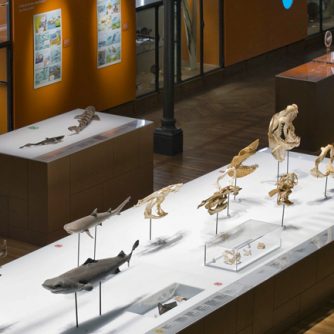
A caressing pool to apprehend one's fears
With this innovative attraction, visitors were invited to overcome their apprehensions by putting their hands in a special pool that allowed them to brush against real sharks.
Certainly not great white sharks, but these species, however small they may be (pyjamas sharks in particular…), have allowed many visitors to change their attitude and beliefs towards this animal.
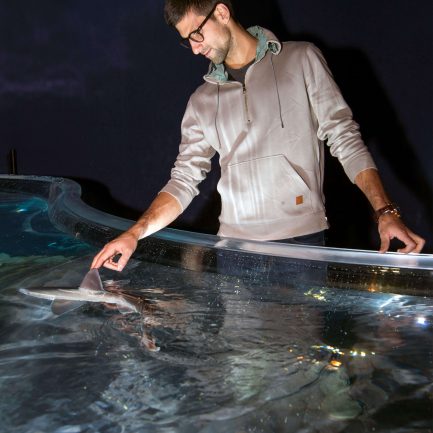
An interactive fresco to deepen your knowledge
The gigantic digital fresco, 20 m long and 3 m high, revealed (thanks to a system of interactive mats) the characteristics of a dozen species of sharks, represented on a real scale.
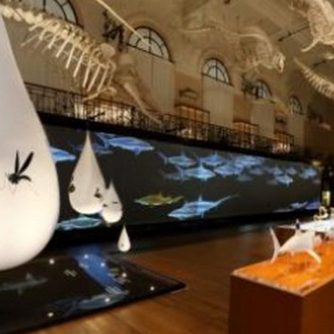
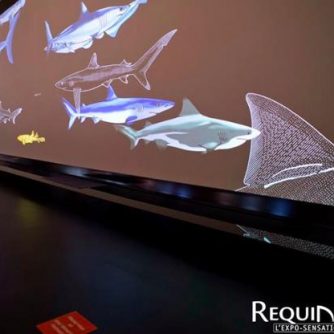
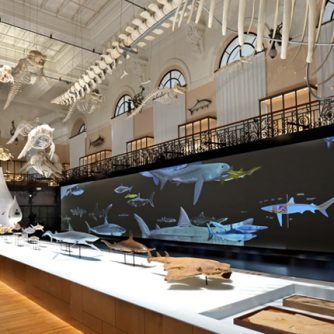
See also
ON SHARKS & HUMANITY
- Accueil
- Exhibitions
After its roaring success at the Oceanographic Museum of Monaco, the exhibition ”On Sharks & Humanity” travelled to Moscow, Russia, before returning to Beijing to be displayed at the National Museum of China.
View our documentary opposite and take a behind-the-scenes look at how the exhibition was put on.
This exceptional exhibition was a huge success in Monaco, drawing in over 490,000 visitors.
“On Sharks & Humanity” was then displayed to Russian audiences on 28 May 2015 at the Ekaterina Cultural Foundation in Moscow.
Here again, the works from contemporary Chinese artists were designed to make people thing about the problems facing sharks and other species of fish endangered by human activities.
As part of its ”Sharks” exhibition, the Oceanographic Museum of Monaco presented the artistic initiative ”On Sharks & Humanity”. This was more than an art exhibition; it was a face-to-face juxtaposition with sharks..
This international exhibition, whose main theme is sharks and their conservation, features 11 unique works created specifically for the Museum by 10 avant-garde Chinese artists and one Monaco artist. Each work casts a singular regard on our complex relationship with sharks and, by extension, on our relationship with nature.
Visitors actively choose the form of their visit and are addressed directly by the works. As soon as they arrive, they are captured in a giant fishing net. Trapped by the power of the and the symbolic scope of the works, they become aware of the essential role played by sharks in regulating marine ecosystems and the negative impact of overfishing. From the entrance hall to the panoramic terrace, via the rooms of the Museum, large-scale installations, sculptures, paintings and poems intertwine, raising questions as to the justification of human actions.
”On Sharks & Humanity” was complementary to the sensorial and scientific exhibition of the Museum within which it was hosted, and also gave visitors the chance to express themselves by writing on a board, for all to see, their own plea to save sharks, in accordance with the principle of ”Everyone is involved and everyone is responsible.”.
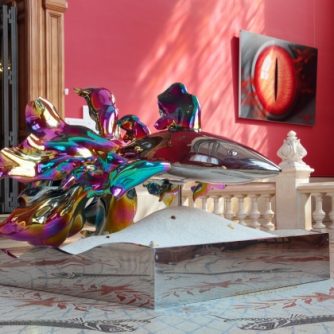
This exhibition, launched by Parkview Arts Action, draws on the works of a collective of modern Chinese artists and focuses on sharks and their preservation.
Supported by the Parkview Arts Action organisation and hosted in collaboration with the international charity WildAid, ”On Sharks & Humanity” uses the universal language of Art to raise public awareness across borders and cultures.
See also
THE BORDERLINE EXHIBITION
PHILIPPE PASQUA
- Accueil
- Exhibitions
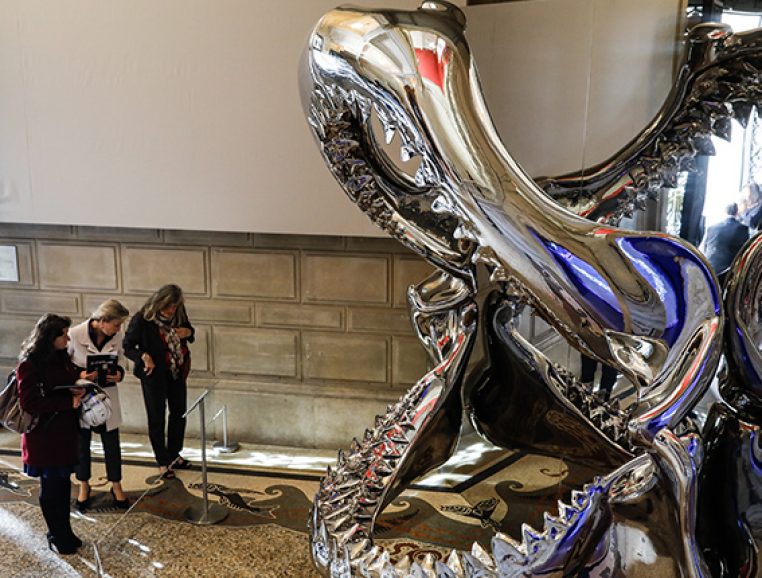
The Oceanographic Museum of Monaco presents the monographic exhibition Borderline, by artist Philippe Pasqua.
His large-scale works, most of which are made to order, will be juxtaposed with the museum’s legendary collections to give rise to a unique dialogue.
The art of Philippe Pasqua plays with limits. It nudges boundaries, pushes frontiers and frees itself from them. His work, violent and immodest, is in equal parts troubling and fascinating, and confronts visitors with the dilemma of whether to soak up the work or look away, a reflex more from defence than from indifference.
“Philippe Pasqua questions, interrogates and disturbs but never leaves visitors indifferent. It is the ideal detonator to shock people into awareness of marine and land life”, in the words of Robert Calcagno, Managing Director of the Oceanographic Museum.
The artist was charmed by the architecture of the Oceanographic Museum and supports its cause, and has created an exhibition in the museum’s image, sincere and plural.
Twelve large-scale works, including seven original creations, are displayed all across the Museum – from the forecourt to the panoramic terrace, via the Le Rocher cliff, overlooked by the century-old building.
CHALLENGING MAN'S RELATIONSHIP WITH NATURE
For Philippe Pasqua, his taste for large-scale works is juxtaposed with his attraction to the most vulnerable and profound things. Cracks and splinters are shown in size XXL. The artist is instinctive and does not think through his work, giving visitors carte blanche to interpret them, as he believes that art transcends the verbal and the visual.”The beautiful part is the evocative power of it”, he admits. The beauty of a work of art lies in the emotion it generates, the way it speaks to the heart.
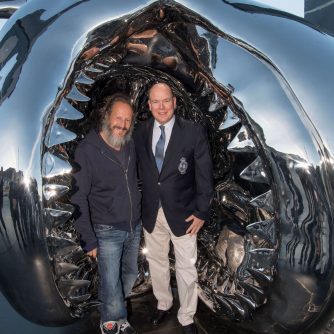
The solution is in every one of us
The artist expresses his full sensitivity here and questions the public on their relationship with nature, death and rebirth.
”Using these cherished items, he plays with the ambiguous relationship that mankind maintains with the marine world, somewhere between fear and fascination, to confront the public with the current challenges of protecting biodiversity”, adds Robert Calcagno.
These ecological challenges, which have been an integral part of the Museum’s identity since it was founded, can be found in these creations.
See also
TABA NABA
Australia, Oceania and the art of the peoples of the sea
- Accueil
- Exhibitions
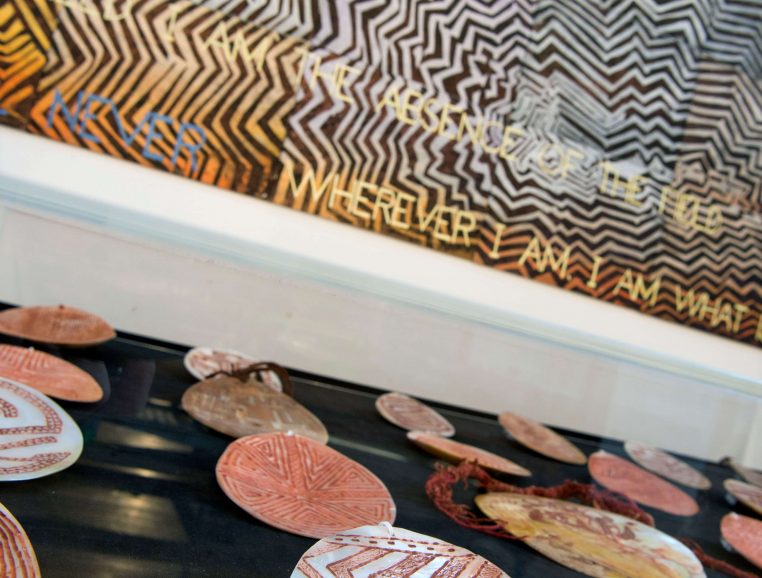
ARTS OF THE PEOPLES OF THE SEA
Between 24 March and 30 September 2016, Aboriginal and Oceanian art was honoured at the Museum in TABA NABA, a major exhibition on the theme of the ocean and water.
The project was structured around three complementary sections, developed with three partners recognised for their work in this very particular form of art.
Australia
The first instalment was devoted entirely to creating and presenting six large-scale installations created by 50 major Aboriginal and Torres Strait Islander artists who, through their works, are raising a cry of alarm against the pollution of the oceans. Rather than taking a morbid look at these environmental issues, the artists chose to approach them with humour and subtlety. This first chapter was designed to unfold like a fairy tale. The works on a massive scale that will be displayed inside and outside the museum will give visitors the impression that they have been transported to the poetic world of Alice in Wonderland.
Living Waters
Oceania
Playing the visions of Oceania islanders and Australian Aborigines off against each other and highlighting their similarities without hiding their differences is the aim of this voyage through works from times past and modern works.. Didiez Zanette focuses on the cultural relations maintained by the Pacific peoples with the sea, by displaying traditional navigational items, artifacts from the Salomon Islands, a series of New Guinean portraits and an extensive collection of Baining marine animal images.
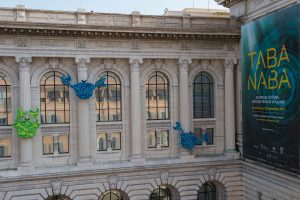
Exhibition spaces
“Australia”
defending the ocean as a central theme of the art of the Aborigines and Torrest Strait Islanders”, curated by Stéphane Jacob, assisted by Suzanne O’Connell
“Living Waters”
a project from the Sordello Missana Collection, curated by Dr Erica Izett, assisted by Dr Georges Petitjean and Donna Carstens
“Oceania”
Islanders past masters in navigation and artistic expression”, curated by Didier Zanette




